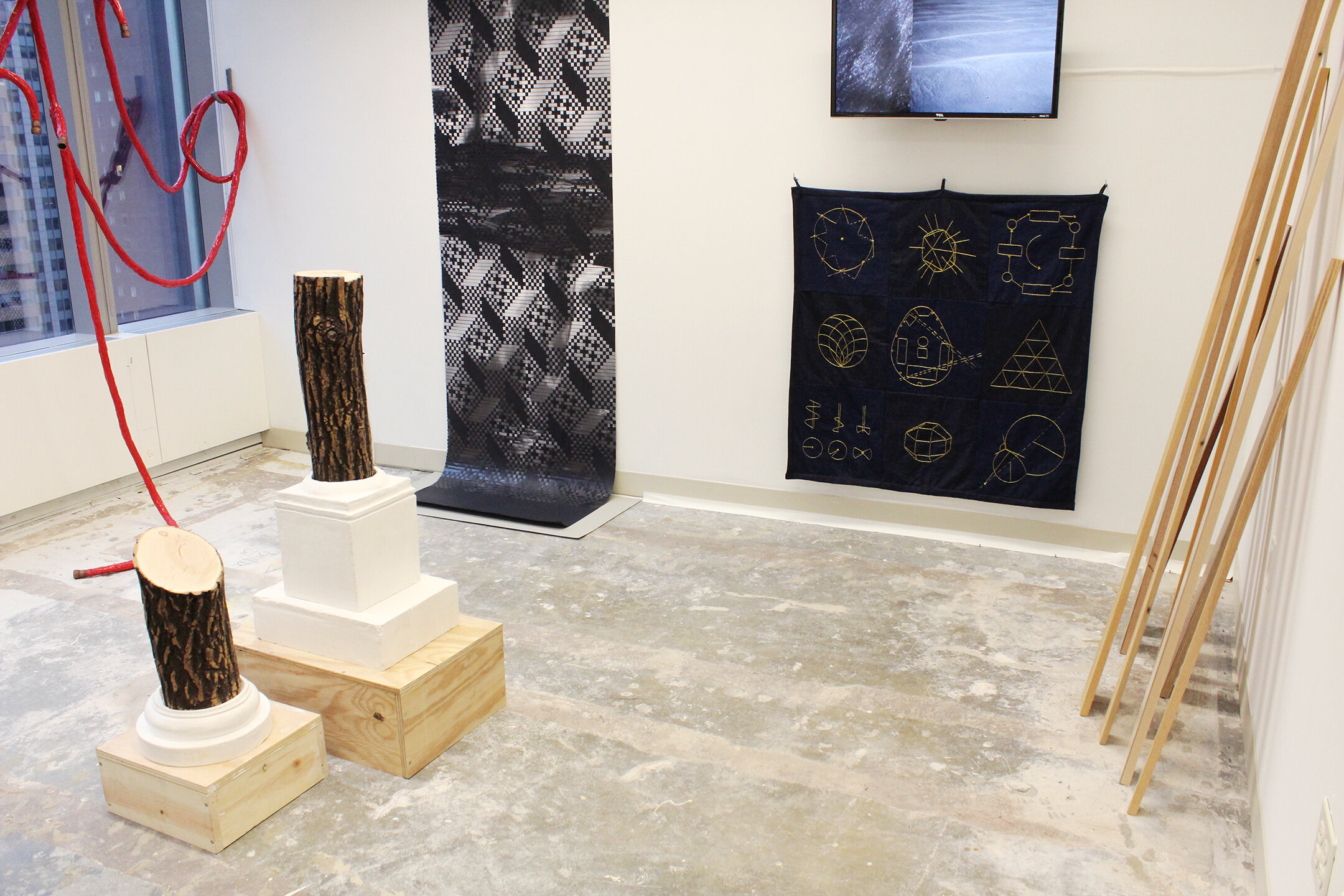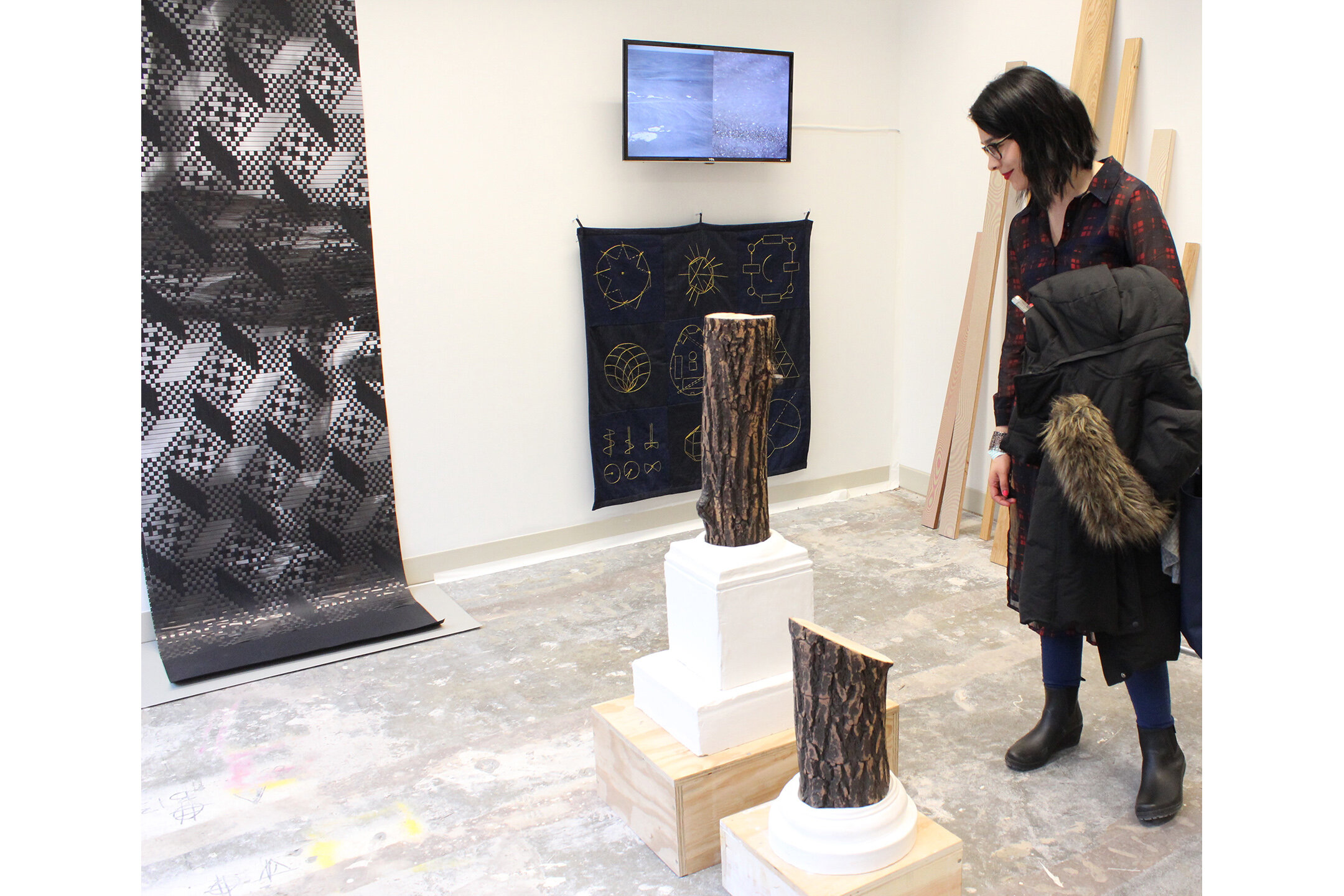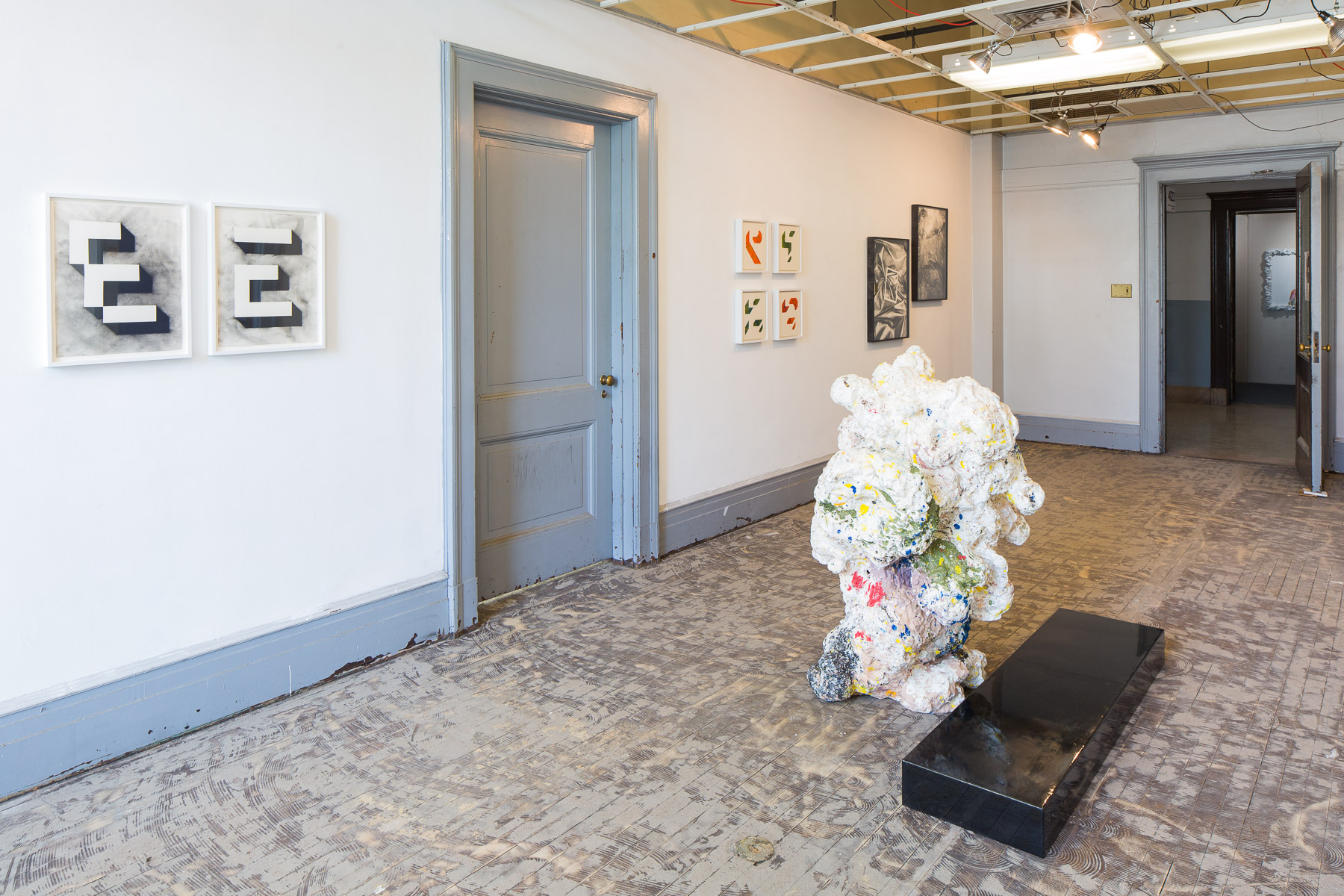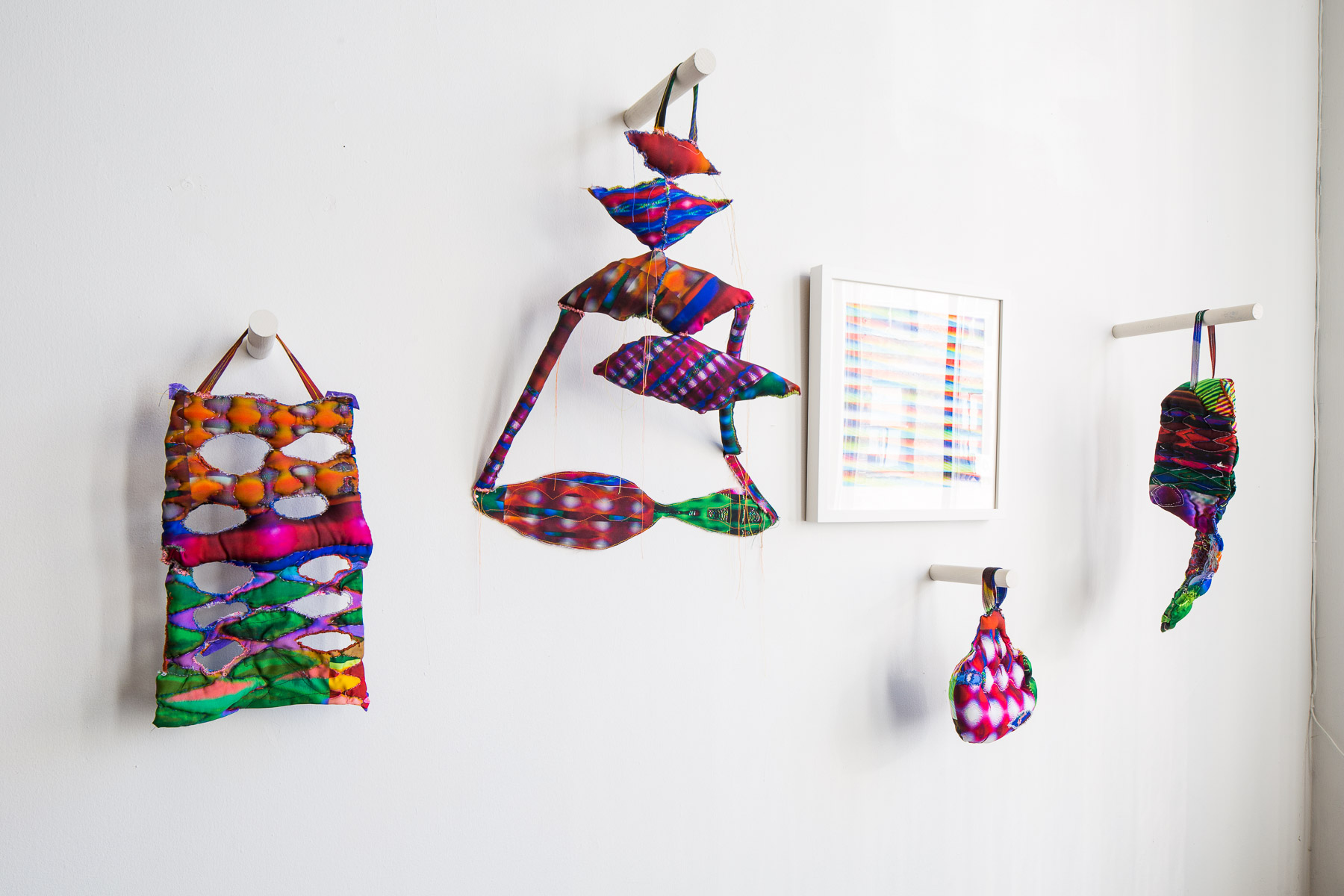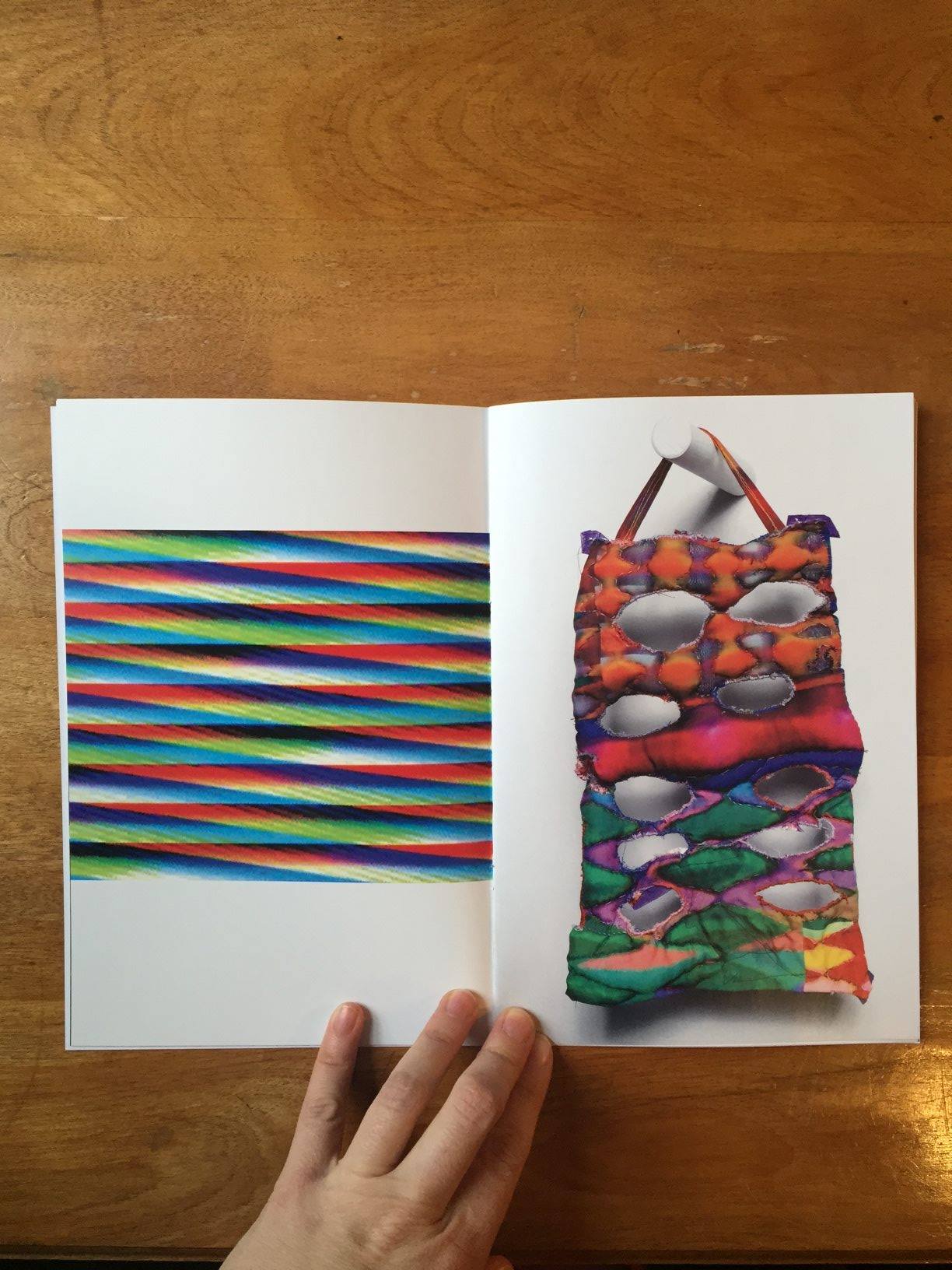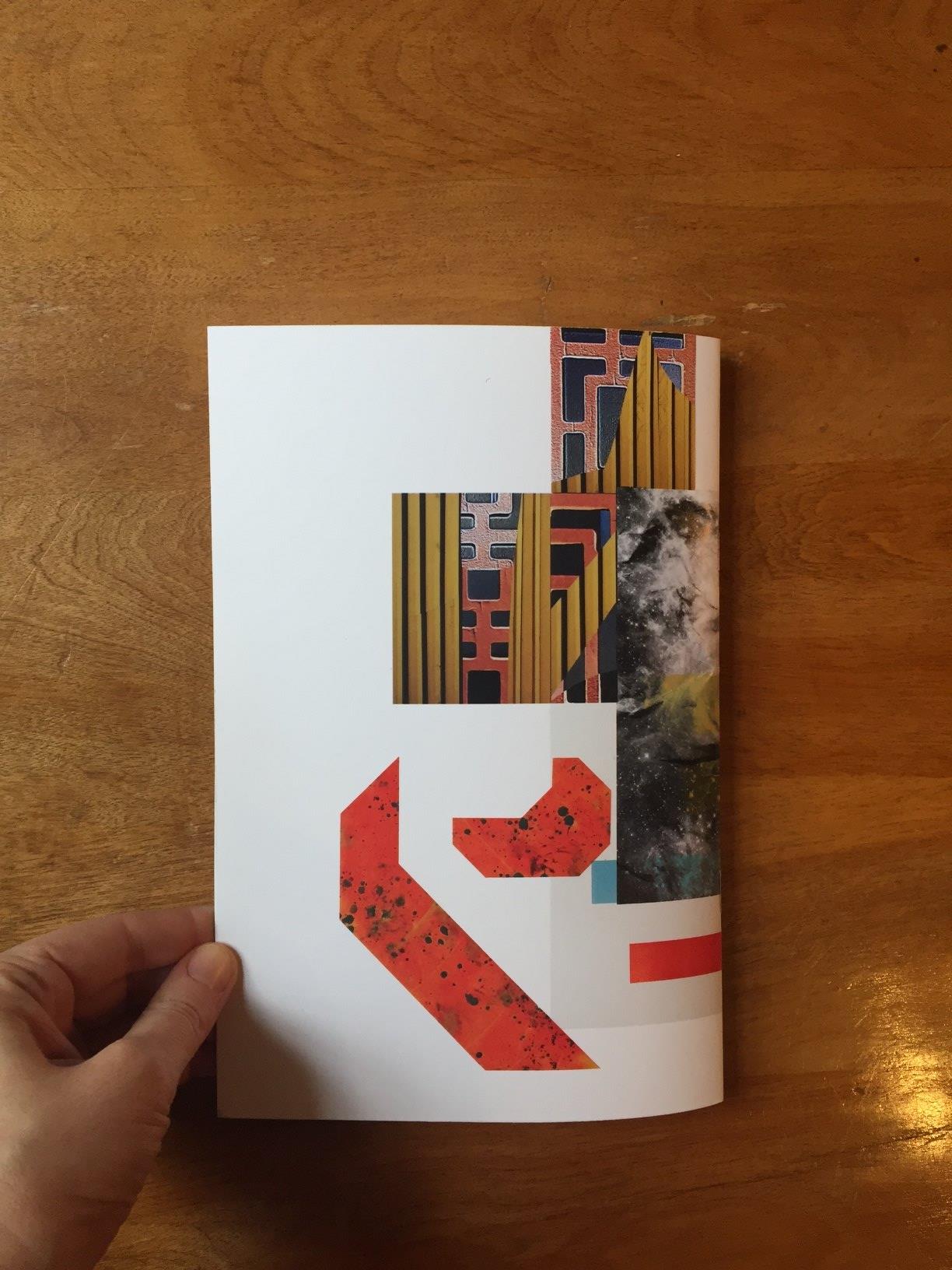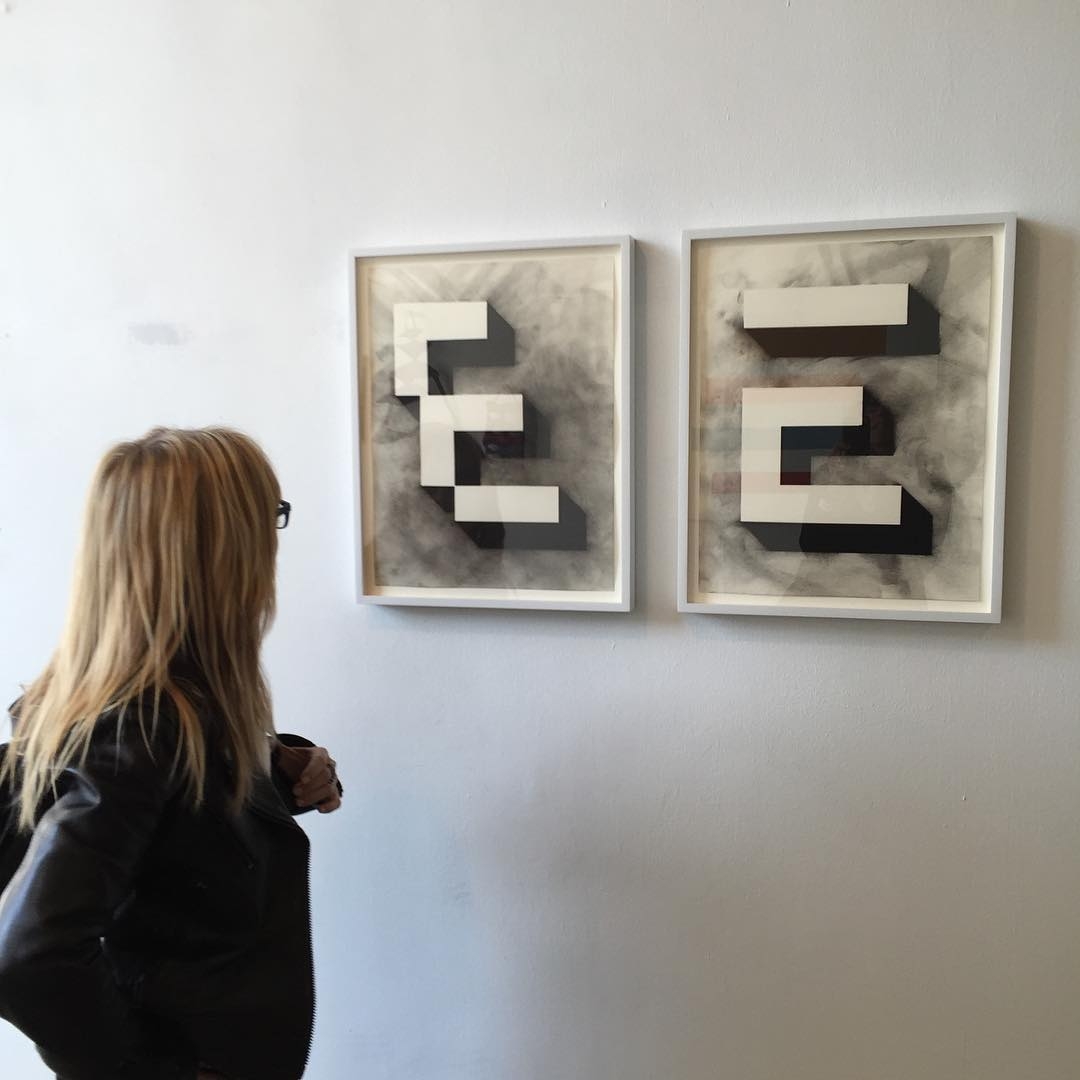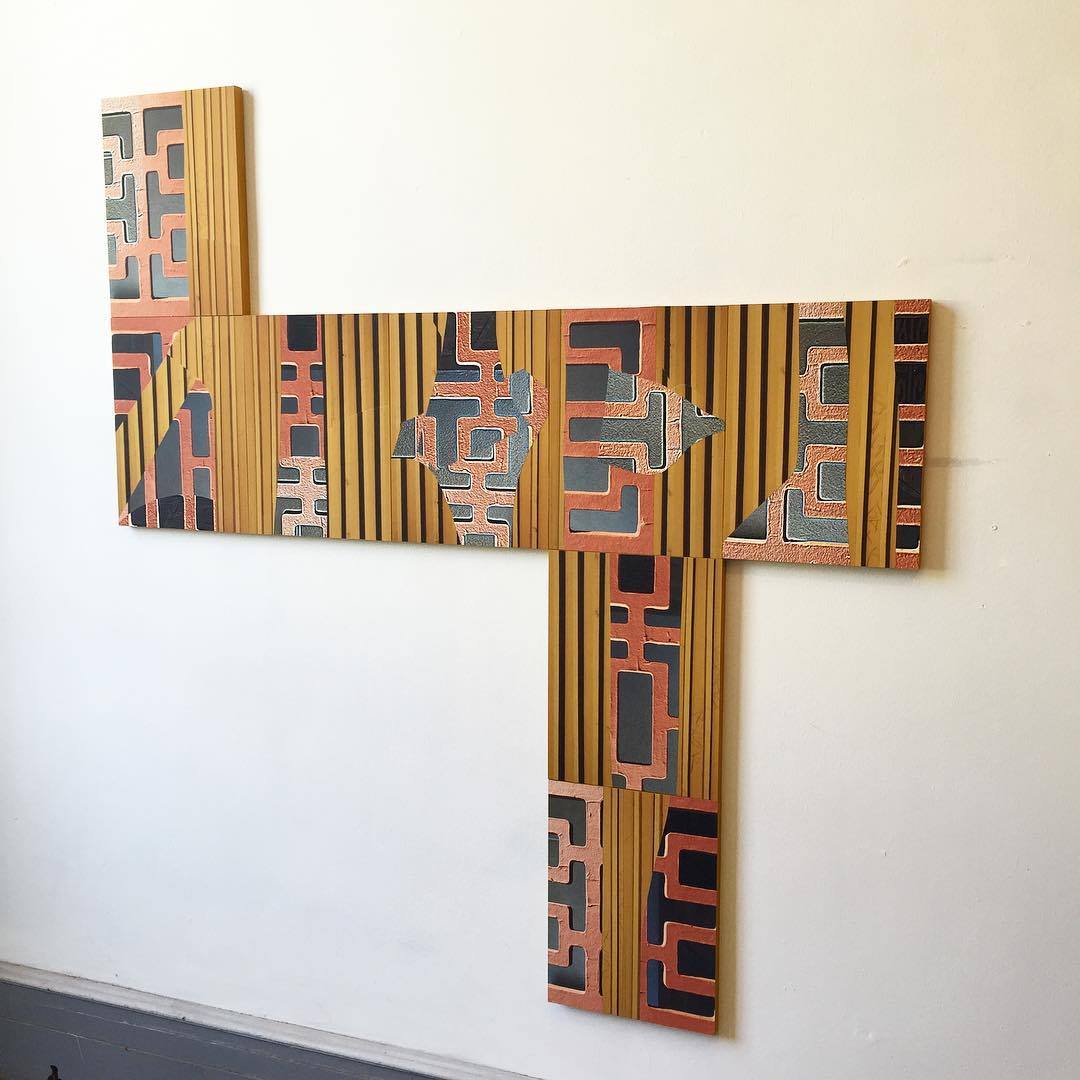FATA MORGANA
@ SPRING/BREAK ART SHOW 2017
Curator: Parsley Steinweiss
Artists:
Tamara Johnson, Sue Kovach, Harriet Salmon, Sarah G. Sharp and Parsley Steinweiss
“Only appearances are fertile; they are gateways to the primordial. Every artist owes his existence to such mirages. The ponderous illusions of solidity, the non-existence of things, is what the artist takes for ‘materials’” - Robert Smithson, Slideworks - 1969
Taken from the same latin root, “mirari”, mirror and mirage also share a perceptual language of a reflected reality that can be both revealing and obfuscating. When a Fata Morgana (a complex mirage) is observed in nature it is sometimes referred to as a “Castle in the Sky”. The reason being, it looks as though a city has magically risen from the ground and transplanted itself in the clouds. This powerful phenomenon has both psychological and psychedelic effects on the viewer, allowing the observer to see the world in a way that is seemingly impossible. Similar to a mirage, the artists in Fata Morgana both illuminate and distort our perspectives. Using collage, photography, drawing, sculpture, video and installation they explore themes of transformation, displacement, and identity embedded in the American landscape.
Tamara Johnson’s sculpture, performance and installation work teases out potent meanings from overlooked fragments of the suburban landscape, ordinary nuances of architecture and un-monumental mishaps of a space. By employing denial, absence and longing as visual tools, her work renegotiates our relationships to everyday objects and occurrences. In her piece, “Hoses: Time Traveler” Johnson has made a large scale site specific installation using the iconography of an anthropomorphic, unwieldy, suburban hose against the backdrop of the city skyline.
Sue Kovach’s sculptures combine the natural forms of severed tree trunks with column bases reminiscent of those used in American architectural ornamentation. The barked logs rise from plaster forms common to institutional building facades and monuments, resembling broken columns. Their rough, undone appearance underlies an inherent material ambivalence-- not fully formed, but resting in an uncertain place somewhere between making and unmaking.
Raised in a family of scientists, Harriet Salmon has developed a personal scientific method for understanding the natural world. Her interest in this phenomenology is tested through observation. In her half-photographic, half-drawn series, “Ansel’s Yosemite”, Salmon has taken photos of Ansel Adams’ WPA Yosemite project and cut them into multiple panels forming gaps between the cuts. Salmon has meticulously drawn in between these gaps, as if to mend the landscape. However, she has also left parts undone, exposing the breaks, alluding to a landscape that is constantly changing-pulling apart and coming together.
Sarah G Sharp’s research-based work uses collage, sewing, drawing and video. The bulk of her research and studio practice cuts across and brings together her interests in alternative social histories, language, place, critical media and craft. Utopian social experiments and outsider communities and their relationships to the land are persistent areas of interest for her. In Sarah’s series, Whole Earth Systems, she uses geometric imagery found in the 1969 Whole Earth Catalog as a formal basis for bringing together idealized images of nature.
Using the photograph to investigate the medium itself, Parsley Steinweiss works to uncover aspects of representation that pertain to seeing and believing. She photographs light phenomena to investigate the relationships generated between how we see and how the camera sees, charting the distance between us and our representations. While the photographic element of her work is not always immediately apparent, the physicality of the photo as object in relation to the photographic content allows for an exploration into ideas of perception, materiality, color, light, space and illusion.
ORIGINAL COPY
@ SPRING/BREAK Art Show 2016
Curated by: Sarah G. Sharp + Parsley Steinweiss
Artists: Molly Dilworth, Enrico Gomez, LoVid, Tom McGlynn, Mark Schubert, Max Warsh, Tenesh Webber, Sarah Palmer
Location: Skylight at Moynihan Station (Main Post Office Entrance), 421 8th Ave, NY, NY RM 4023
Dates: March 1st - 7th, 2016
“I believe that in our culture of simulation, the notion of authenticity is for us what sex was for the Victorians—threat and obsession, taboo and fascination.” -Sherry Turkle, Alone Together
Reproduction has always been part of the training and production of artists. It is part of how we learn to see and make. However, in an era where a sense of “realness” is a mutable, flexible idea and simulacra, or the reference to a thing, can now stand in quite happily for the thing itself, the meaning, use and purpose of the “original” has shifted. Walter Benjamin described the beginning of this shift in relation to the new art forms of early last century in his essay Art in the Age of Mechanical Reproduction: “The presence of the original is the prerequisite to the concept of authenticity… From a photographic negative, for example, one can make any number of prints; to ask for the “authentic” print makes no sense.”
We can easily apply and update Benjamin’s observations to current technology; now the same image not only exists simultaneously in multiple times and spaces, it is a given that the number of copies, resolutions and formats are endless and free. In fact these ideas have been wholly absorbed into mass culture producing new subtleties in how we define what is “real” and new collective anxieties surrounding the definition of “original.”
Part of these questions of authenticity are based in a loss of traditionally identifiable evidence of labor, or “the hand,” in mechanically/digitally made works of art. Without this indexical trace of human presence authorship becomes questionable and meaning is wildly subjective.
Original Copy presents seven artists whose work plays with the idea of “the hand” while addressing our cultural fascination with “authenticity” through analog and digital means.
Each of Tenesh Webber’s photographic images is an original object, produced without a negative. Webber builds delicate string structures and exposes them onto photo paper, capturing ghostly traces of texture and line and ensuring that a copy can never be made mechanically. They wholly rely on and are resistant to the purpose of traditional darkroom technology while defying contemporary expectations about reproducibility. Enrico Gomez’s abstract drawings and paintings riff on written and visual codes from latino and queer culture. Basic elements of typographical forms and color relationships are recombined in a way that retain reference to their source, and therefore familiarity and apparent legibility, while asking the viewer to “fill in the gaps” with their own cultural knowledge. Tom McGlynn’s recent paintings also refer to sign systems from mass culture, especially media and advertising from the middle of last century. Vaguely referencing page layout proofs for print media, these handpainted works do not invent color systems but rather re-process color information absorbed during McGlynn’s youth in mid-twentieth century America. In the context of this show, Molly Dilworth’s small embroidered paintings appear to be traditional works, perhaps even a source for digital patterns. However, they also operate as a kind of reprocessing of digital, pixel-based shapes and patterns re-processed back into the handmade. Using textiles as well, LoVid’s “Video Taxidermy” re-imposes the hand onto imagery that begins as analog video signals. These signals are processed and printed onto fabric, then cut apart, sewn and stuffed into surprising forms, generating a new, three-dimensional, “edit” of the original signal.Max Warsh’s large scale photographic collages feature the repetitive language of building facades that form a visual syntax that is both abstract and architectural. In his collages building parts are cut and reassembled to create flattened structures that are both familiar and fragmented. Sarah Palmer delves into the self-reflexive realms of photography, commenting directly on the boundary between what is real and what is invented. Photographs and other printed matter are re-photographed in her images which both highlight and call into question the relationship between original and copy. Mark Schubert’s sculptures live between painting and sculpture, humor and darkness and figuration and abstraction. Through these tensions emerge forms that are psychologically laden and lyrical in expression. Mark’s sculpture “Fish Angel”, is a large coral-like, painted, plaster structure which he created using a waste mold. Unlike regular molds, where the objective is to make multiple copies of an original object, a waste mold can only be used once and is destroyed during the process of releasing the it. The final piece is result of its process, an original copy.


